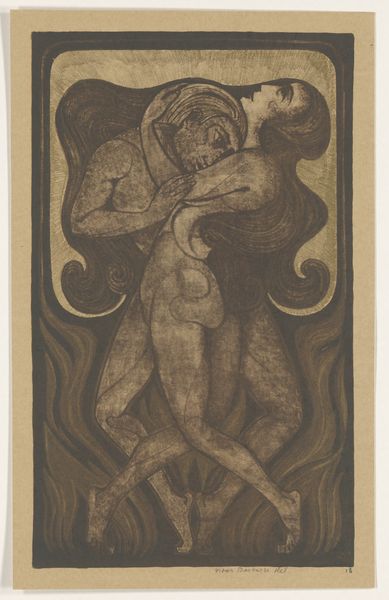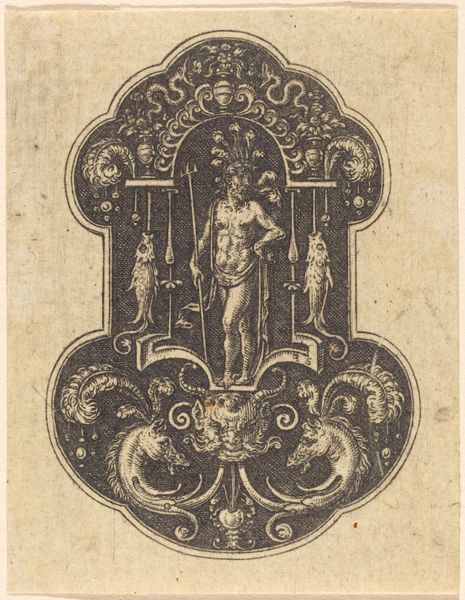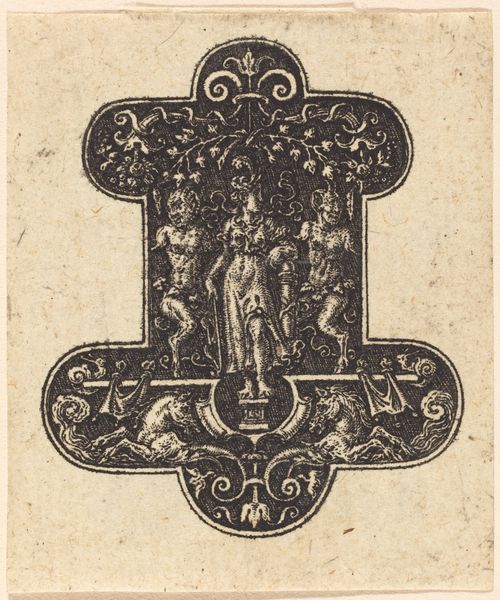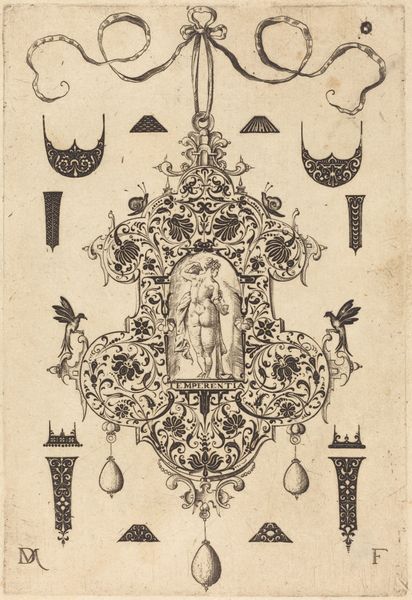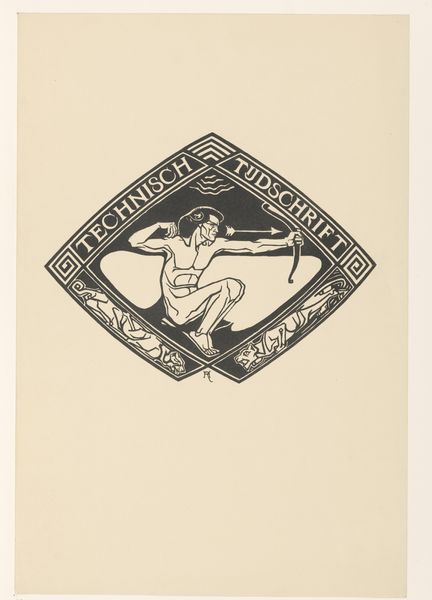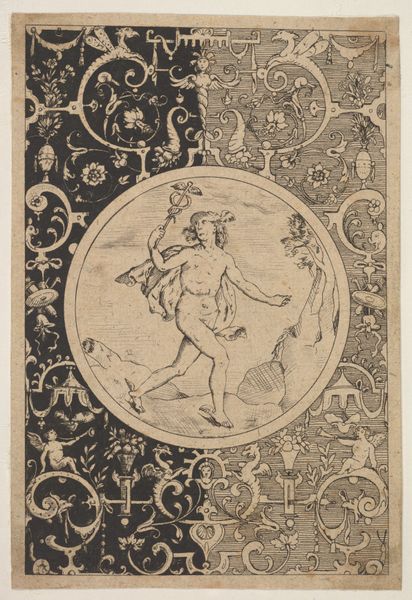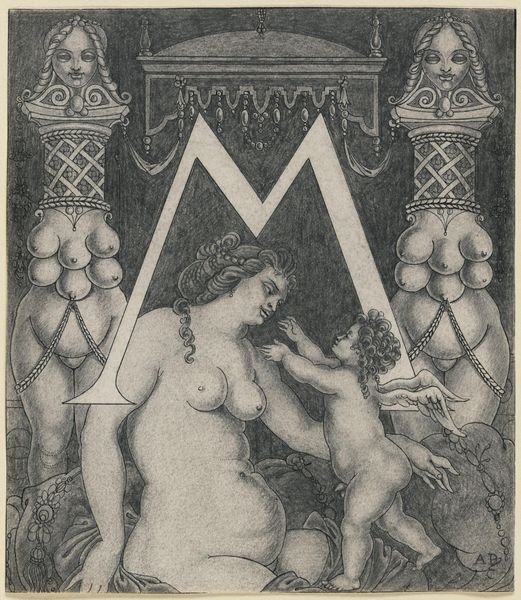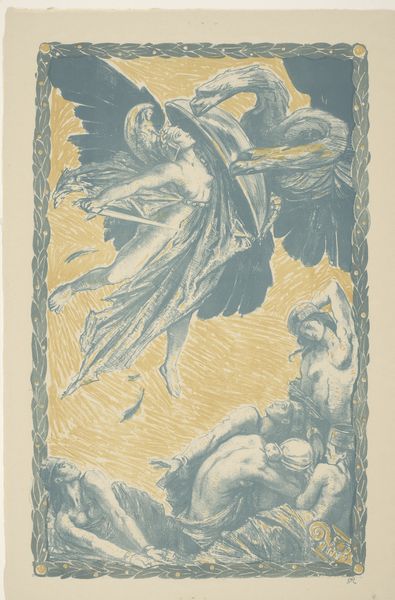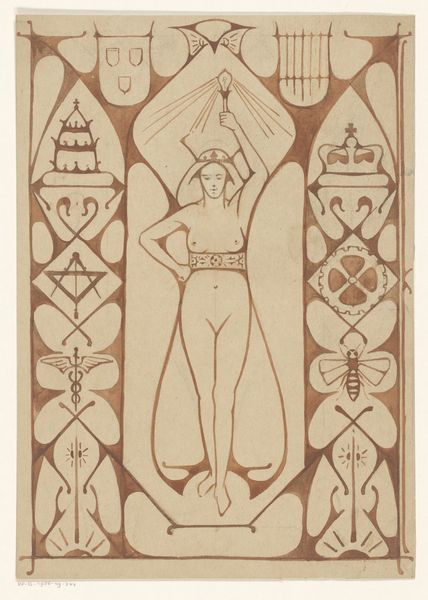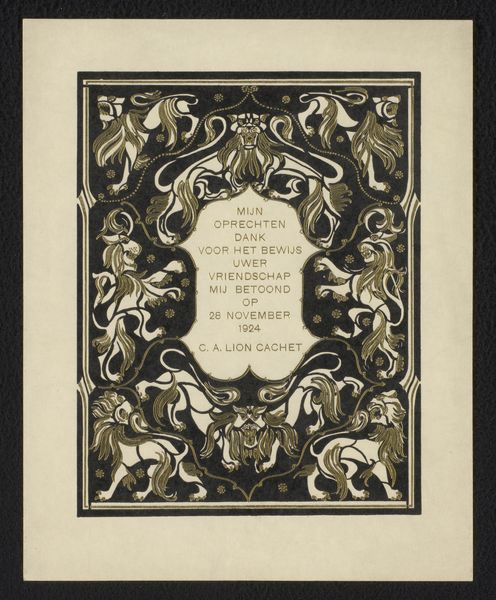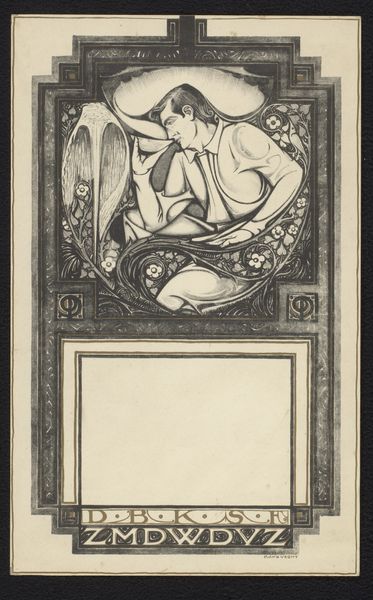
drawing, print, linocut, relief-print, etching, paper, ink
#
drawing
#
pen drawing
# print
#
linocut
#
relief-print
#
etching
#
figuration
#
paper
#
ink
#
linocut print
#
symbolism
#
nude
Dimensions: height 477 mm, width 305 mm
Copyright: Rijks Museum: Open Domain
Editor: This print, "In dank en vriendschap aan Roland Holst," likely created between 1910 and 1926 by Jac Jongert, employs a combination of techniques like etching, linocut, and pen drawing. The nude figure within the ornate frame creates a somewhat unsettling yet intriguing effect. What do you see in this piece? Curator: I see a powerful symbolic representation of the emerging proletariat. Jongert dedicates the image to Roland Holst, likely praising Holst’s commitment to socialist ideals. How does the artist frame his activism? Editor: The ornate frame, juxtaposed with the raw nudity, seems intentionally provocative, as if challenging societal norms around the body and class. It’s dedicated to a friend, so the personal and political seem linked. Curator: Precisely. Consider how the inscription frames Holst as someone who reveals “the awakening proletariat,” it links intellectual labor with the burgeoning power of the working class. How do the visual and textual elements interact in communicating Jongert’s social message? Editor: The flowing text intertwined with the imagery definitely gives the sense of an awakening, a rising consciousness. I hadn’t considered the intertwining of image and word, that is interesting! Curator: Thinking about that interplay reveals Jongert's awareness of art's potential as a tool for social commentary. Did anything surprise you about this artwork? Editor: Yes, I initially focused on the artistic style without fully appreciating its activist intent. It's a good reminder to consider the artist's message beyond the surface aesthetics.
Comments
No comments
Be the first to comment and join the conversation on the ultimate creative platform.
